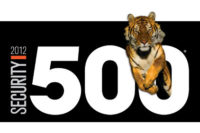
Those crazy kids. Using Facebook to socialize with their friends, selecting and customizing avatars atZwinky, getting the latest “news” based on popularity at digg and checking out everyone else’s favorites and sharing their own atdel.icio.us. And they are delivering their own content by sharing photos, video and audio viatwango.
Boy, things have sure changed since my brothers and I played in the back yard with our fire and wheel. And, if reading the above paragraph makes you feel change has passed you by, you should see the fuss my spellchecker is making.
A Community Thing
Social networks are a way for individuals to gather (create or join communities) and exchange information, photos, videos and interests. Among the most known and used areMySpacewith over 200 million members.Friendsteris another popular network with over 50 million members. Social networks can also be small, such as Amina, with 3,500 members in the Chechen Republic.YouTubeis a social network, too, driven by video viewing. All of the sites noted above serve their members in different ways.Diggallows the social community to post news, making it a “social news” site. The news consumed by the most members moves to the top of the front page.Del.icio.ustakes the favorites function in a Web browser to the next level. The social book marking site helps you both better organize your favorites and opens them up to everyone in your social network. You can see your friends’ favorites sites and they can see yours.
For those that really want to share, stickam provides a live webcam on yourFacebookpage. AndZingFulets you “pimp your Website” (ain’t cyberspace grand?). We often hear of negative outcomes of social networks such as members being victimized by predators. And there are success stories of law enforcement policing social networking to catch predators. As well as “rescinded job offer” stories due to “oversharing” photos or videos of inappropriate behavior.
Putting information into social network sites may have an implication for both national security and individual privacy.
In 2006, Paul Marks of NewScientist.com published the news that the “Pentagon’s National Security Agency, which specializes in eavesdropping and code-breaking, is funding research into the mass harvesting of the information that people post about themselves on social networks…to combine data from social networking sites with banking, retail and property records, allowing the NSA to build extensive, all-embracing profiles of individuals.” Tapping phone calls and mining call activity is so yesterday!

Social networks are a way for people to gather and exchange information. They have a business purpose but also a security threat.
Serious Business Tool
But make no mistake – social networks are also a serious tool for business in general and security organizations in particular. The leading social network for business professionals isLinkedInwith more than 15 million members.LinkedInenables business people to share problems and solutions, buyers and sellers to match up and prospective employers and employees to connect. You can post questions like, “What’s the best way for a CSO to ask for more stock options?” and community members with this knowledge will respond.The use of social networks for communications and information sharing within security organizations is on the rise, too.
Social networks and the Internet enable many of the communications obstacles faced during Katrina and 911 to be overcome. What the FBI has been unable to accomplish with a $1 billion investment in its Trilogy program may be readily available through Web-based social networks. On 911 the police and fire departments would have invited each other into their social networks making members visible to each other (including skill set information such as EMT or hazmat skills) and enabling communication that was not possible through non-compatible communications systems and maxed out cell phone networks.
Homeland Security Affairs published “Expecting the Unexpected: The Need for a Networked Terrorism and Disaster Response Strategy” that outlines the benefits of social networks and “swarm intelligence” vs. command and control management response. The hallmarks of this strategy are “flexibility, ease of incorporating situational awareness into decision-making, and the ability of anyone available after a catastrophe to create ad hoc strategies with available resources.” (The characteristics of “swarm intelligence” particularly relevant to emergency management are flexibility, robustness and self-organization. The actions of passengers on Flight 93 are an example.)
Delivering Emergency Communications
Dennis McDonald’s paper “Potential Applications of Social Media and Social Networking in Local Disaster Response” provides specific examples of how social media and social networking can benefit organizations like yours in the planning and delivery of emergency related services. “People use the tools available to them when a crisis hits. Increasingly these tools include blogs, text messaging, and social networking systems such asFacebook,” says McDonald.A social network may be a tool for your organization to share photos of suspects, video of incidents, communicate and coordinate activities during emergency situations. The participants can be local or global. And private social networking software can be bought or licensed. While social networks are not new, their acceptance by users and improved functionality to address specific organizational requirements have and continue to improve.
As we conclude the New Security Magazine's second full year of publication, we thank you for your tremendous support. Your ideas, feedback and active participation in helping us build your business magazine is greatly appreciated. We especially thank you for your passion and commitment to keeping our communities, families and colleagues secure. Thank you for your dedication and hard work. We wish you the happiest of holidays and a successful 2008!
Trends Archive on Security's Web
The Security Magazine Web site atsecuritymagazine.comcontains an easy-to-access archive of Mark McCourt’s Trends columns as well as feature articles on the use and misuse of the Internet.The magazine Web site also boasts a daily news service in partnership with the LexisNexis news service. There are nine news topics updated daily. Among the topics: Security Technology & Trends, the Security Industry and Business Security.
While social networking is a growing concern, there are national security concerns, too. For example, Security’s Web site recently reported that weapons like Stryker armored vehicles are crammed with computers and other digital devices but vulnerable to enemy hackers. They can blind a tank by cutting off information. Or they can lay an ambush by eavesdropping on plans. The answer: "digital armor."


